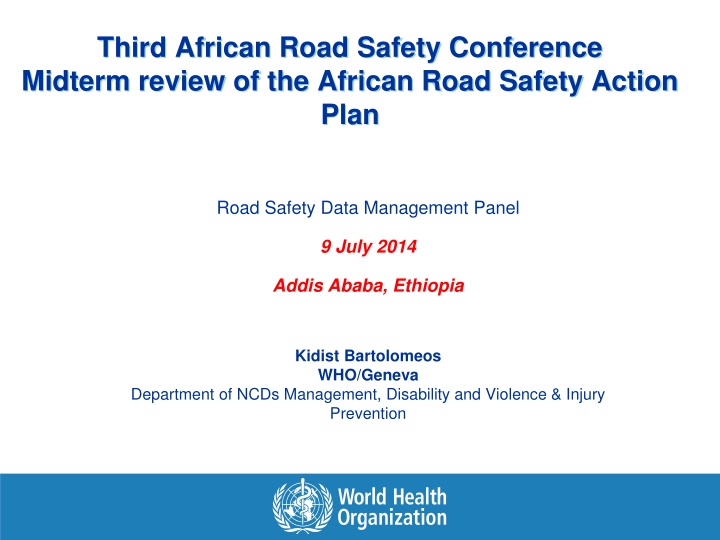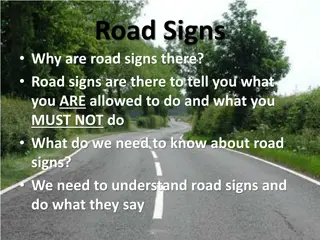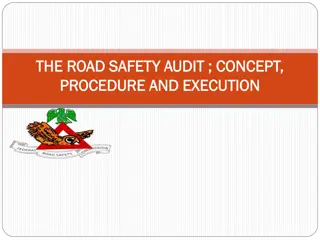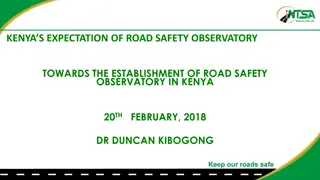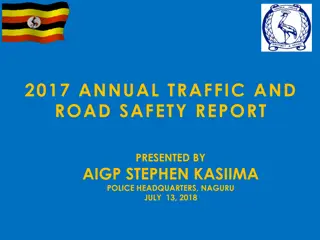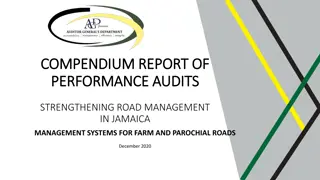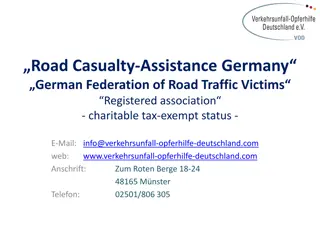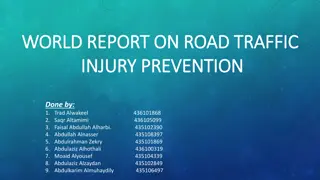African Road Safety Data Management Review
This content discusses the challenges and importance of road traffic injury data management in Africa, highlighting issues such as under-reporting of deaths, lack of harmonization in indicators, and the need for reliable data to assess and monitor interventions. It emphasizes the shared responsibility among various entities in improving road traffic injury data systems, and the current gaps in data collection and utilization, particularly in the African region.
Download Presentation

Please find below an Image/Link to download the presentation.
The content on the website is provided AS IS for your information and personal use only. It may not be sold, licensed, or shared on other websites without obtaining consent from the author.If you encounter any issues during the download, it is possible that the publisher has removed the file from their server.
You are allowed to download the files provided on this website for personal or commercial use, subject to the condition that they are used lawfully. All files are the property of their respective owners.
The content on the website is provided AS IS for your information and personal use only. It may not be sold, licensed, or shared on other websites without obtaining consent from the author.
E N D
Presentation Transcript
Third African Road Safety Conference Midterm review of the African Road Safety Action Plan Road Safety Data Management Panel 9 July 2014 Addis Ababa, Ethiopia Kidist Bartolomeos WHO/Geneva Department of NCDs Management, Disability and Violence & Injury Prevention
Rationale Rationale Globally there is a big gap in the quality and coverage of data that countries collect and report on RTI. Under-reporting of RTI deaths remains a big problem in many countries. Lack of harmonization on definition of RTI indicators limits the use of existing national data. Reliable data on deaths and non-fatal injuries are needed by countries in order to: assess the scope of their road traffic injury problem target responses Monitor and evaluate the effectiveness of intervention measures
Road traffic injury data system Core Data Elements PERSON RELATED COST RELATED CRASH RELATED RTI DATA SYSTEM TRAFFIC RELATED VEHICLE RELATED ROADWAY RELATED
Road traffic injury data improvement is a shared responsibility STATISTICS OFFICE Vital registration TRAFFIC POLICE crash data OTHERS?? RTI DATA SYSTEM PLANNING & FINANCE Investment data HEALTH Injury/Person data TRANSPORT Vehicle data
Health data sources No injury Mild Moderate Severe Fatal Household (community) survey Community based Health clinic records Health facility- based Doctors (GPs) records Emergency departments registers Ward admission registers ICU admission registers Forensic investigation Mortuary-based Death certificate/Vital Statistics Vital registration
Only 40% Member States can report usable data on deaths and cause of death
Rationale Several issues with available VR data Approx 120 (62%) countries reporting VR data to WHO Quality of data varies Death registration data containing usable information on the cause of death missing in 82 (43%) of countries Problem is worse in SSA Estimates show 17% of global injury deaths occur in Africa. Data usually collected in ad hoc manner Often manual: limits access, data analysis and dissemination Misclassification to "other" categories Collected data under-utilized Limited access because of bureaucracy, ownership claims and limited knowledge of use
Rationale The need for autopsy on deaths due to external causes makes mortuary a potential source of fatal injury data A feasible, standardized data system could: Be effective in documenting deaths from external causes Reduce differences in classification, coding and variable aggregation Possible data source for testing on other diseases
Mortuary-based surveillance National CRVS improvement plan Communities/DSS sites Verbal Autopsy-Injury module Mortuaries (Fatal injury surveillance system implementation)
Other regional activities Strengthenging data systems: Bloomberg Global Road Safety Program (2010-2012) Capacity Development CDC Field Epidemiology Program
